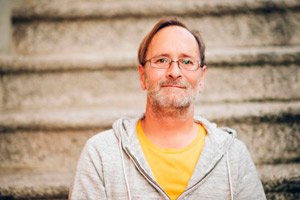
All iLive content is medically reviewed or fact checked to ensure as much factual accuracy as possible.
We have strict sourcing guidelines and only link to reputable media sites, academic research institutions and, whenever possible, medically peer reviewed studies. Note that the numbers in parentheses ([1], [2], etc.) are clickable links to these studies.
If you feel that any of our content is inaccurate, out-of-date, or otherwise questionable, please select it and press Ctrl + Enter.
Aging accelerates after about 50 years of age - some organs age faster than others
Last reviewed: 03.08.2025
 ">
">A new large-scale study published in the journal Cell has shown that the body does not age evenly and smoothly: around age 50, the body reaches a “turning point” after which age-related changes accelerate. Blood vessels age especially quickly.
The findings add to a growing body of evidence that aging is not a linear process but rather punctuated by periods of dramatic change. Still, larger studies are needed before scientists can pinpoint age 50 as a tipping point, says Maya Olechka, who studies aging at the Leibniz Institute for Aging – Fritz Lippmann Institute in Jena, Germany, and was not involved in the study.
“There are these waves of age-related changes,” she says. “But it’s still hard to make general statements about the timing of these turning points.”
Age visible in whites
It has been shown before that different organs can age at different rates. To look into this further, Guanghui Liu, who studies regenerative medicine at the Chinese Academy of Sciences in Beijing, and his colleagues collected tissue samples from 76 people of Chinese descent, aged 14 to 68, who had died from accidental traumatic brain injury. The samples came from organs representing eight body systems, including the cardiovascular, immune, and digestive systems.
The researchers then compiled a compendium of the proteins found in each sample. They found age-related increases in the expression of 48 disease-related proteins, and noticed early changes around age 30 in the adrenal glands, which are responsible for producing various hormones.
That fits in well with previous findings, says Michael Snyder, a geneticist at Stanford School of Medicine in California. “It reinforces the idea that hormonal and metabolic control are important,” he says. “That’s where some of the most profound changes occur with age.”
Between the ages of 45 and 55, there is a tipping point marked by significant changes in protein levels. The most dramatic shift was found in the aorta, the body’s main artery that carries oxygenated blood away from the heart. The team identified one protein produced in the aorta that, when injected into mice, triggered signs of accelerated aging. Liu suggests that blood vessels act as conduits, carrying molecules that promote aging to distant sites in the body.
The study is an important addition to other work that has analyzed molecules circulating in the blood, rather than tissue samples taken from individual organs, as a way to track age-related changes, Snyder says. “We’re like a machine,” he says. “Some parts wear out faster.” Knowing which parts are susceptible to wear and tear could help researchers develop interventions to promote healthy aging, he adds.
Halfway to a hundred
Last year, Snyder and his colleagues found aging tipping points around ages 44 and 60. Other studies have found accelerated aging at other times, including around age 80, which was beyond the scope of the current study, Olechka says.
Inconsistencies with other studies may arise from the use of different sample types, populations, and analytical approaches, Liu says. As data accumulates, key molecular pathways involved in aging will likely begin to overlap across studies, he adds.
These data will accumulate quickly, Olechka says, as researchers increasingly include detailed time series in their studies rather than simply comparing “young” and “old.” And the findings could help researchers interpret periods of abrupt change. “We don’t understand what triggers this transition point at the moment,” she says. “It’s a really exciting, evolving field.”
